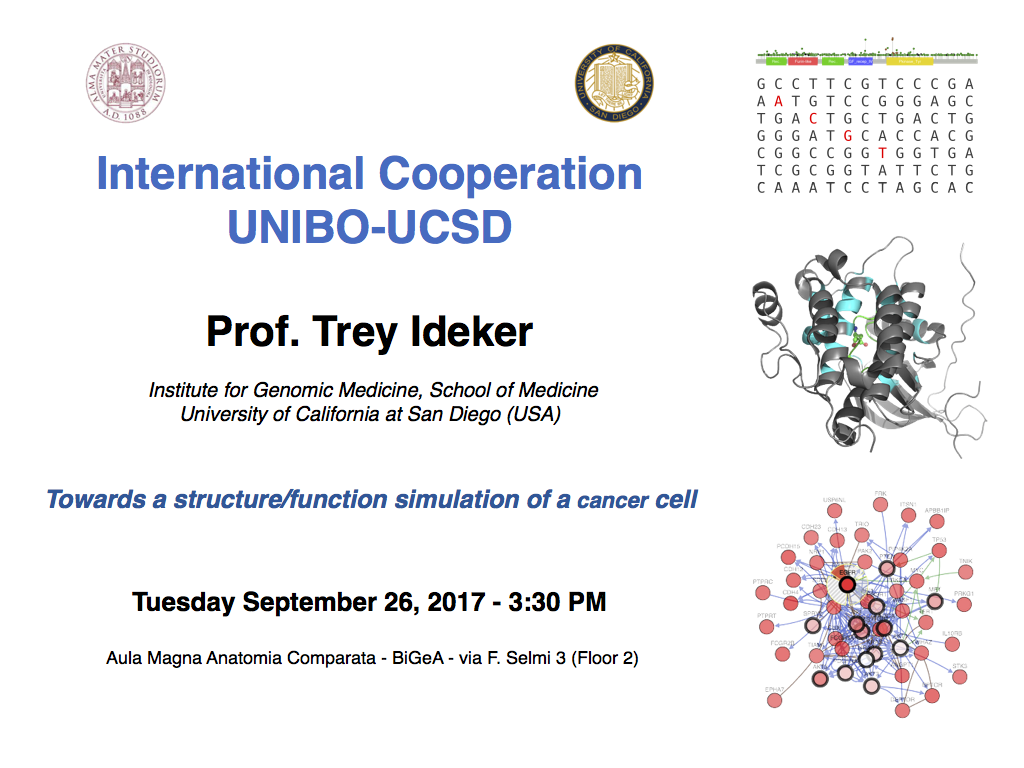Project Presentation
What: Presentation of the Cooperation Project UNIBO-UCSD
When: 26 September 2017 - 3:30 PM
Where: Aula Magna di Anatomia Comparata, BiGeA - Via F. Selmi 3, Bologna
To improve the research and training activities of the University of Bologna, the Biocomputing Group has started a collaboration with the Division of Medical Genetics at the University of California, San Diego to promote student and faculty exchange.
Emidio Capriotti (UNIBO) will provide a short overview of the Cooperation Project UNIBO-UCSD recently funded by the University of Bologna.
In the occasion of the presentation, Prof. Trey Ideker (UCSD) will give a talk presenting the results of his recent research activity. More information about his seminar are reported below.

Title: Towards a structure/function simulation of a cancer cell
Abstract: Recently we have launched the Cancer Cell Map Initiative (ccmi.org) and have been building momentum. The goal of the CCMI is to produce a complete map of the gene and protein wiring diagram of a cancer cell. We and others believe this map, currently missing, will be a critical component of any future system to decode a patient's cancer genome. I will describe efforts along several lines:
- Coalition building. We have made notable progress in building a coalition of institutions to generate the data, as well as to develop the computational methodology required to build and use the maps.
- Development of technology for mapping gene-gene interactions rapidly using the CRISPR system (Shen et al. Nature Methods 2017; Roguev et al. Nature Methods 2017).
- A large map of inherited mutations (i.e. SNPs we are born with) that predispose us to particular mutations later in life that cause cancer (Carter et al. Cancer Discovery 2017).
- Further development of database technology to store the cancer cell maps (http://ndexbio.org/; Pratt et al. Cell Systems 2015).
- Piloting a computational environment for analyzing all of the above data to create computational models of cancer cells.
In a paper published in January (Kramer et al. Molecular Cell 2017) we showed how gene and protein interaction data can be assembled to construct hierarchical models of the whole cell and all of its subsystems. In a paper by Ma et al. currently in review, we have shown how this system hierarchy can be embedded with a deep neural network, so that the model is able to accurately simulate the effect of mutations in genotype on the cellular phenotype.
BiGeA - via Selmi